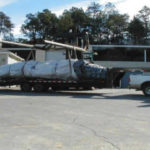
This boat ramp was in need of serious repairs. The owner learned that by using AquaDams, he could complete his work for less than half the price of the sheet piling which would have been very noisy and disruptive to the live-on boat owners. The only noise generated from the use of the AquaDam would be the sound of the water pumps.

The damage to the ramp is quite severe, and it only gets worse farther out. This is a common problem with old concrete boat ramps. This one was poured in 1960.

The maximum water depth along the outside area of the proposed AquaDam placement was 8', so a 12' high AquaDam was used. It had to be started at least 4' up the bank to allow it to fill completely. To minimize seepage the rocks were removed from the bank where it would start. A tree provided a convenient tie-off point.

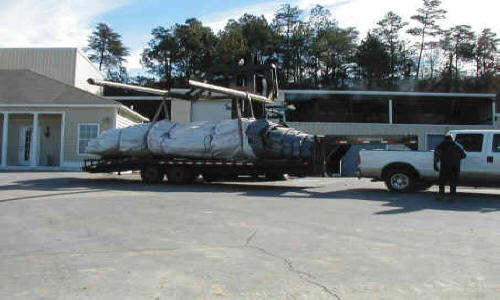
This 12' high AquaDam was 250' long and weighed approximately 10,000 lbs. It was lifted from the trailer by a forklift customized for lifting boats out of the water.

The forklift transported the AquaDam down the boat ramp and onto the water. The easiest way to maneuver a rolled AquaDam is to get it in the water, because the small amount of air trapped inside the tubes during rolling makes them float.

The rolled AquaDam is moved into position, the ropes cut, and the protective wrapper removed. A rope is attached to the fill tubes, and as the AquaDam unrolls, it is pulled up the bank by the forklift until it reaches the desired height.
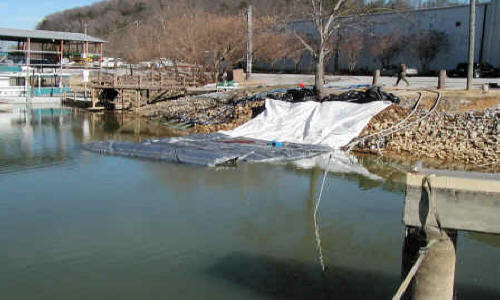
There is no water flow of any kind in this area, so no restraining ropes are needed to maintain head pressure inside the AquaDam. Fill hoses are placed inside the inner tubes, and the AquaDam is allowed to unroll as it fills. The sides have been folded in to make the AquaDam easier to transport.

The plastic stake in this picture marks the outer edge of the boat ramp, plus 10'. The AquaDam CANNOT encroach on the work area. Because of the needed turn, the AquaDam is started a considerable distance from the spot where it will end up. Room is also left so that a backup dam can be used if necessary.

The AquaDam continues to unroll as it fills. The dam is actually reaching 8' below the top of the water and is pushing on the bottom of the lake. You can walk out on it and stand on the unrolled portion.
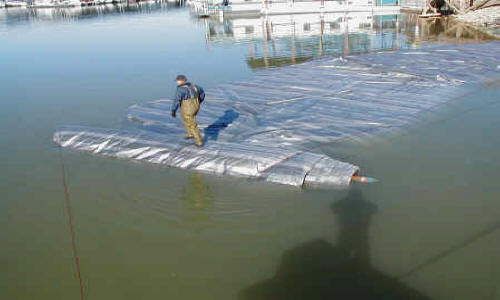
You can see the folded-in sides unfold directly behind the rolled up AquaDam. A rope is tied to the outside end of the wooden core that the AquaDam is rolled around. This allows workers on the bank to pull the AquaDam around at the appropriate angle to connect back into the bank.

The AquaDam has to fit between these columns to intersect back in with the bank to make a watertight cofferdam. Rope angles have to be continually changed. The pumps leading to the "inside" inner tube of the AquaDam are shut off, and the pumps leading to the "outside" turn are left on.
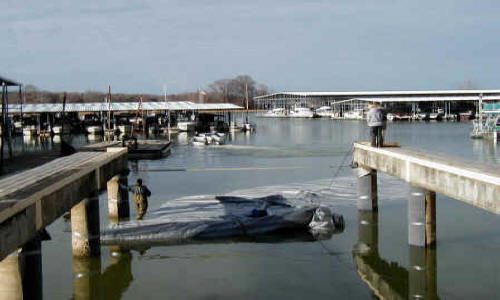
A rope is now attached to either end of the wooden core so that the AquaDam can be manipulated between the columns. Ropes have been left around the AquaDam in case it needs to be pulled into position.

The wooden core of the AquaDam is actually a little bit too wide to fit between the columns. By using the ropes and having the worker push, the AquaDam slides into place. The sides of the columns have been covered with indoor/outdoor carpet to prevent any sharp barnacles from puncturing the AquaDam




